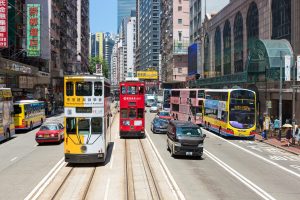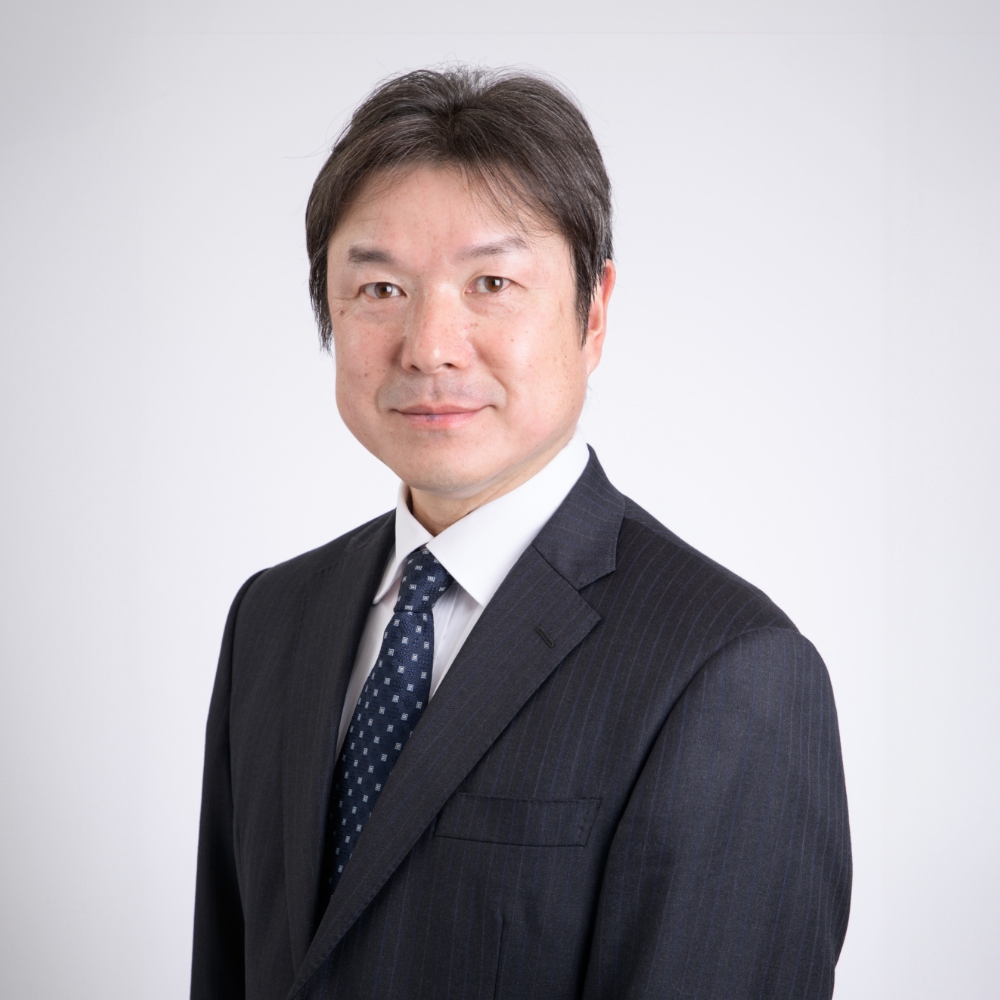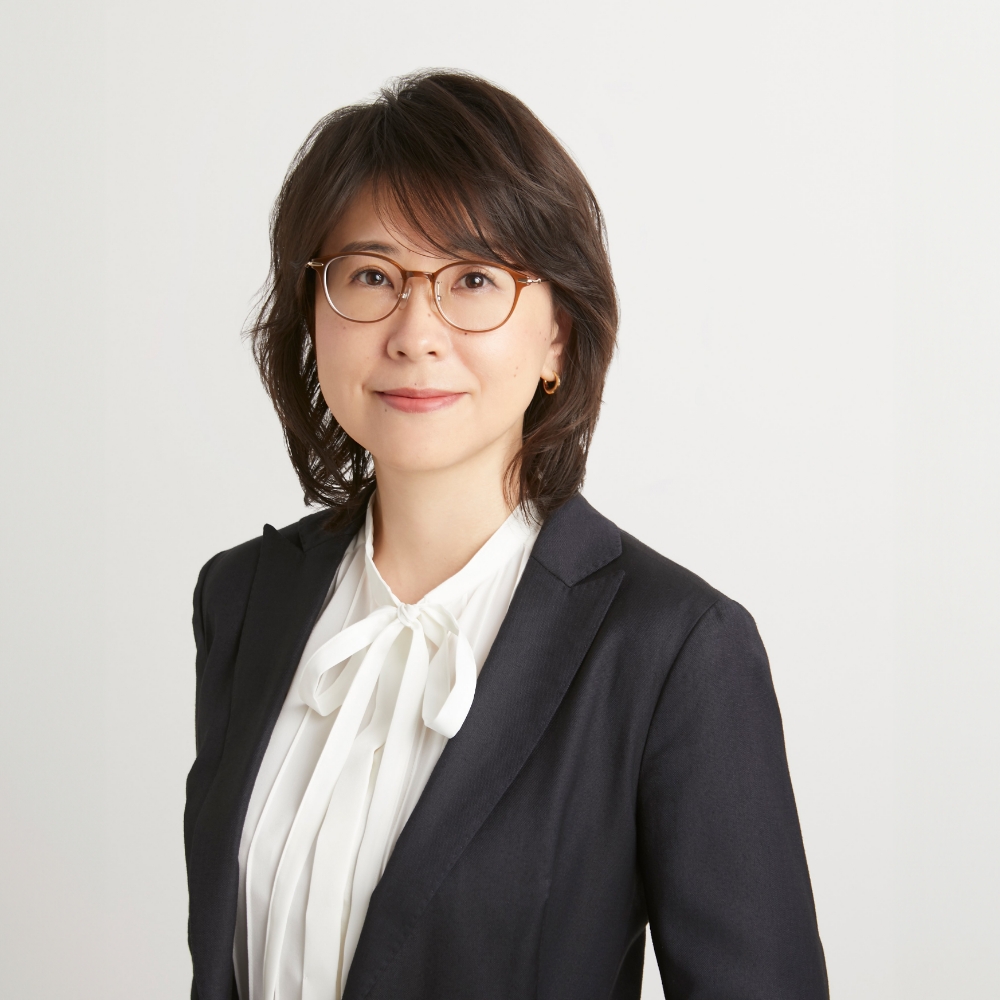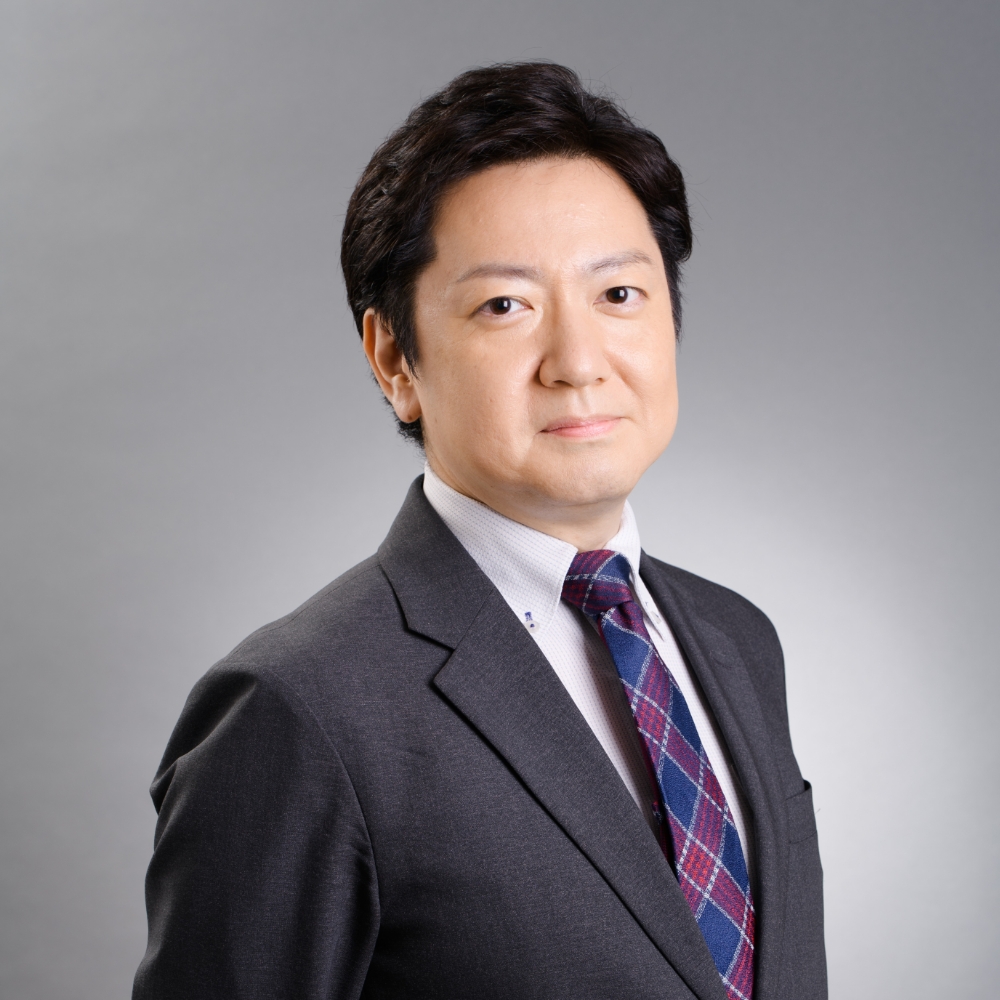Introduction
While mobility demonstration trials often involve autonomous driving, means of addressing regional traffic issues and demand for mobility can take on many forms, matched to regional circumstances. Moreover, the provision of the mobile services truly needed by a region is not possible without the cooperation and collaboration of the community and its citizens.
I would like to examine these issues here, drawing on the recently held online event hosted by the Cabinet Office’s SIP-adus (see note at the end of the text).
In June 2021, as part of the Citizens’ Dialogue event sponsored by the Cabinet Office’s SIP-adus (which has been planned and operated by SC-ABeam Automotive Consulting since 2017), an online meeting was held on the theme of initiatives by the city of Yokohama in Kanagawa Prefecture.
Citizen’s Dialogue is a dialogue event held since fiscal 2016 to foster social acceptance by communities toward the social implementation of autonomous driving technologies. The most recent event broadly addressed regional transportation issues, taking up Yokohama’s approach as its theme. Experts and responsible staff persons from the City of Yokohama, The University of Tokyo, Yokohama National University, and Keikyu Corporation took the podium in lectures and panel discussions.
The proceedings of the day are summarized in video format on the SIP-adus community site “SIP-cafe.”
Transportation issues in Yokohama
Many local governments in Japan are struggling with population decline and aging. Yokohama, one of the country’s largest cities, is no exception. The population of Yokohama is heading downward from the peak of 3.73 million recorded in 2020, in a decline that is expected to continue. The rate of aging, or the percentage of the population aged 65 and over, is projected to grow from 20% in 2010 to 25% in 2020, reaching 27% in 2030 (Figure 1).
Figure 1. Future estimated population and age composition in Yokohama (Source: Lecture materials, City of Yokohama)
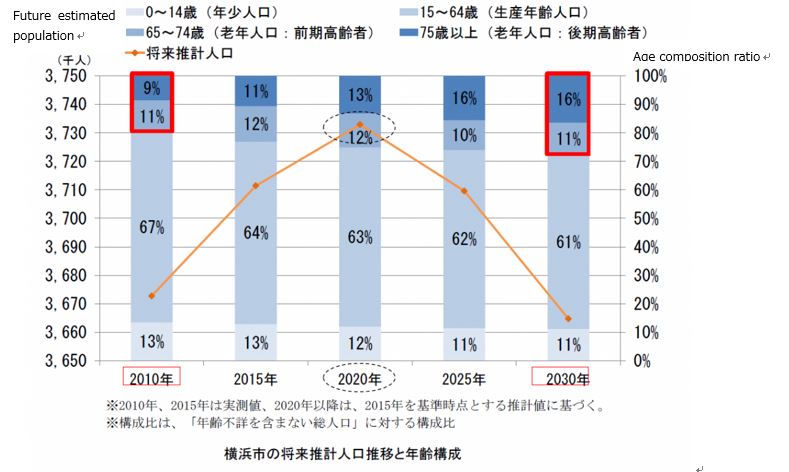
Route buses also face issues. The daily number of bus users decreased by 150,000 between 1997 and 2010, and has remained low since (Figure 2). One reason for this is thought to be decreasing demand for work and school commuting as the young and working-age populations decline. The aging of bus drivers and drivers’ long working hours are also issues (Figure 3).
Figure 2. Daily number of bus passengers in Yokohama (Source: Lecture materials, City of Yokohama)
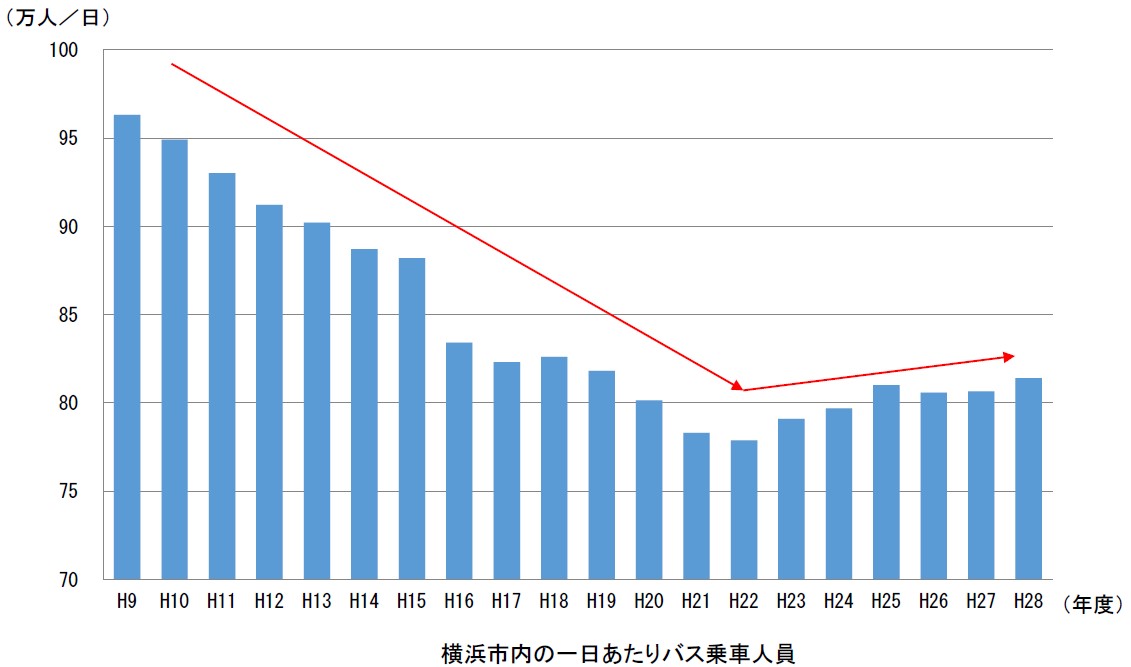
Figure 3: Comparison of average age and average overtime working hours of bus drivers
(Source: Lecture materials, City of Yokohama; original data from Road Transport Bureau, Ministry of Land, Infrastructure, Transport and Tourism)
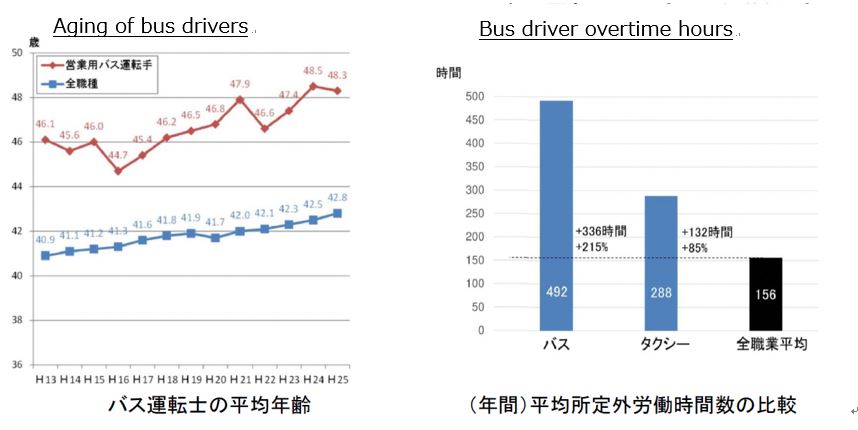
Another characteristic issue of Yokohama is its terrain, which features significant differences in elevation. Looking at the figure indicating total elevation difference from the nearest bus stop (Figure 4), red areas that indicate an elevation difference of 30m or greater are scattered throughout the city, revealing restricted access to bus stops, as well as access to train stations via bus, for the elderly and other traffic-challenged persons.
Figure 4. Elevation differences relative to nearest bus stop. Red areas indicate an elevation difference of 30m or greater (Source: Lecture materials, City of Yokohama)
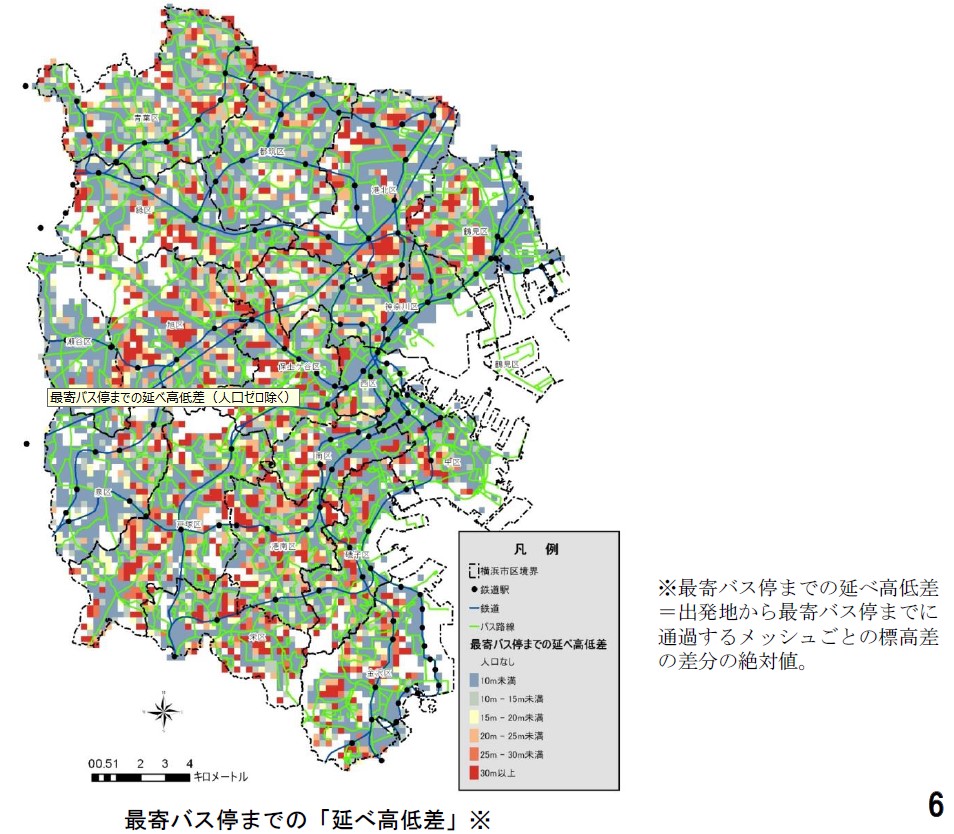
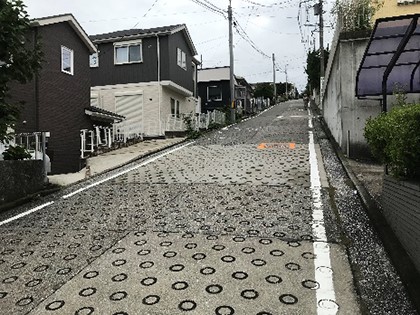
Tomioka, an area with steep slopes (Source: Press release, Keikyu Corporation)
TOMIOCART regional transportation service initiative
While Yokohama’s Regional Transportation Support Project and other efforts to address the above sort of traffic issues are wide-ranging, here I will consider matters of importance in approaches to regional traffic issues by looking at the TOMIOCART shared mobile service demonstration trial.
TOMIOCART, a regional transportation service demonstration trial in the Kanazawa district of Yokohama, has been underway since 2018. The third trial in fiscal 2020 was conducted from October 2020 to February 2021 in collaboration with Yokohama City, Keikyu Corporation, Yokohama National University, and Nissan Motor Company, Ltd.
The service is expected to complement existing public transportation, create an environment enabling easy movement even in areas with many slopes, and enhance the appeal of these as places to live.
The trial operated golf cart-based “green slow mobility” and shared vans in the area, with Keikyu taxi crew serving as drivers.
Service modes consisted of regular route service and free area service. Regular route service was changed from the past bus stop-based service to one in which passengers raise a hand to freely board and disembark, enhancing convenience. The target area was expanded as well. In free area service, in which passengers reserve a vehicle via app or phone, the service area was reviewed to match the needs of users and reservation waits were shortened to as little as 15 minutes for reservations via app, improving ease of use.
In discussions, ideas were exchanged from the respective standpoints of the local government, business, and university participants that collaborated on the demonstration trials. I would like to offer my own summary of what came into view.
The importance of public participation
The TOMIOCART demonstration trial carefully listened to and incorporated the opinions of residents, who offered voluntary cooperation.
As an example, when setting travel routes, the focus was initially on needs related to the difficulty of going up and down slopes. However, through questionnaires and desired routes registered via the app, residents’ wishes to use the routes for picking up and dropping off children and for visiting specific destinations (neighboring stations, supermarkets, etc.) were captured and were reflected in the setting of routes. Mobility demonstration trials appear to be going beyond mere test runs, entering a stage of seeing actual daily use in line with local needs.
The particulars of improvements to vehicles are also interesting. The golf cart-based vehicles have been improved from the initial model, reflecting comments about the difficulty of opening and closing the fastener from a crouching stance, comments about cold interiors, and requests to make the vehicles more attractive. Improvements that involve users can be considered “co-evolution of the community and the vehicle” (Associate Professor Ariyoshi, Yokohama National University).
Cooperation by residents went even a step further. There were movements by the community to embrace TOMIOCART, including the offering of store space in front of train stations as waiting areas and for asking about usage, and regional studies lessons about the program by local junior high schools.
Community-oriented MaaS such as TOMIOCART is intended to improve the lives and lifestyle of people living in the area. Gaining the understanding and cooperation of the community would seem to be a prerequisite for success.
The difficulty of capturing true needs
In discussions, the difficulty of grasping true needs that lead to actual use also came up.
A staff person from Yokohama City said, “We need to be careful to not take a simple wish for some service as the existence of a need … In the questionnaire, even if people place a check next to an item about wishing for some service, opening the lid often reveals that there won’t actually be many riders. It’s quite difficult to get citizens to communicate true demand.”
In setting the routes for the TOMIOCART demonstration trial, not only the questionnaire but also desired routes registered in previous demonstration trials were taken into consideration. Pursuing true needs through this sort of trial and error can be considered necessary.
It also appears important that residents take the opportunity to participate in discussions on difficulties they currently face and how improvements can be made. Especially for a community-based mobility service, I felt that having people in the community actively take part with a sense of ownership, and persistently creating mechanisms and laying groundwork for them to do so, seem to be the keys to success.
Together with users, improvements were made to the TOMIOCART vehicles (Source: Lecture materials, Yokohama National University).
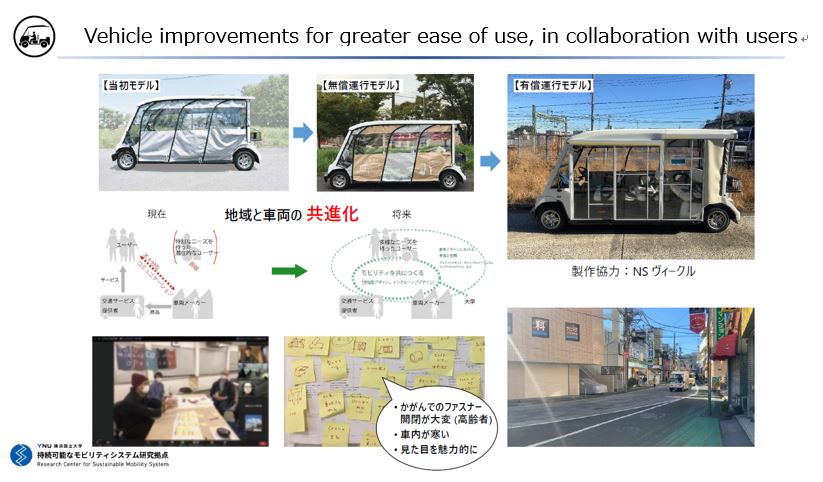
The project will function and be improved through community understanding and collaboration (Source: Lecture materials, Yokohama National University)
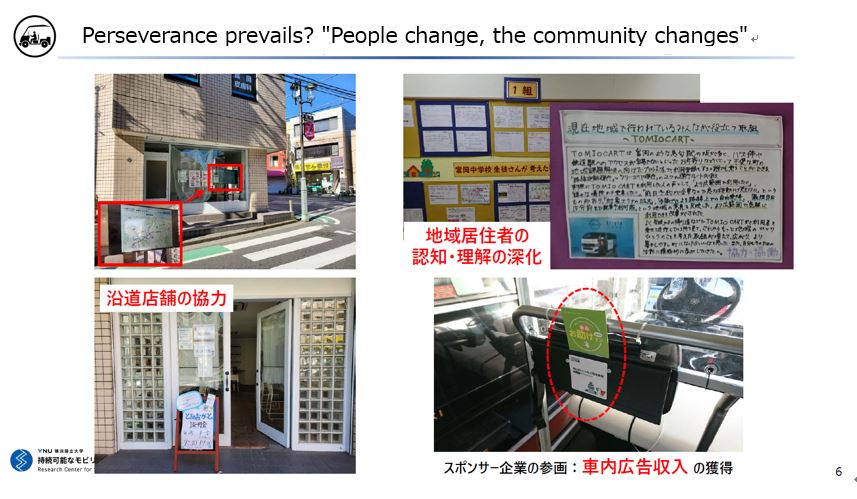
<Supplementary notes>
SIP: A national project established by the Council for Science, Technology and Innovation of the Cabinet Office, which functions as a command center for science and technology, to bring about innovation in science and technology through management that crosses government agencies and conventional fields. It works to promote industry-academia-government collaboration centered on program directors who provide powerful leadership for programs, and engages in end-to-end research and development from basic research to exit.
SIP-adus (from Automated Driving for Universal Services) is an autonomous driving initiative within SIP that advances research and development aimed at reducing traffic accidents, alleviating traffic congestion, securing means of transportation for the elderly people or other persons facing traffic restrictions in rural areas, and otherwise solving social issues. In the second phase of SIP, it will expand the scope of application of autonomous driving to general roads, and will promote the practical realization of logistics and transport services utilizing autonomous driving technologies.
Bibliography
City of Yokohama Regional Transportation Support Project
https://www.city.yokohama.lg.jp/kurashi/machizukuri-kankyo/kotsu/bus_kotsu/support/chiiki.htmlh
Yokohama City press release, “Notice of TOMIOCART Regional Transportation Demonstration Trial in Tomioka District along Keikyu Line,” October 1, 2020
https://www.city.yokohama.lg.jp/city-info/koho-kocho/press/toshi/2020/20201001keikyu.html
Keikyu Corporation press release, “Demonstration Trial of Shared Mobility Service for Solving Regional Transportation Issues,” October 1, 2020
https://www.keikyu.co.jp/company/news/2020/20201001HP_20078TS.html
Keikyu Corporation TOMIOCART Demonstration Trial website
Yokohama City Urban Development Bureau, Keikyu Corporation, “Everyone’s Tomioka/Nokendai: Hills and Greenery Urban Development IMAGE BOOK,” published May 2021
SIP cafe, “Mobility in City Suburbs as Seen from Initiatives by Yokohama: Citizens’ Dialogue@Yokohama,” June 28, 2021
https://sip-cafe.media/info/6647/
Driver Web, “Nissan participates in demonstration trial: Shared mobility service TOMIOCART to start on October 11; verification aimed at practical use begins – Industry-academia-government collaboration among Nissan, Keikyu Corporation, Yokohama City, and Yokohama National University,” October 1, 2020



